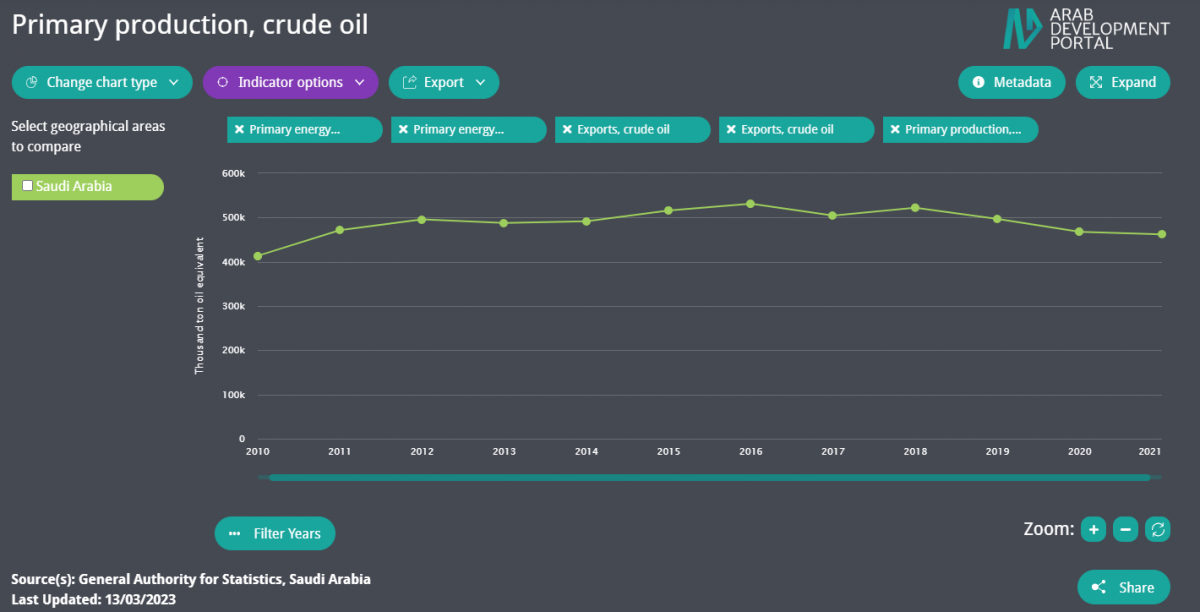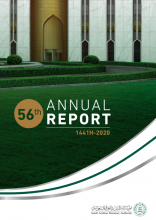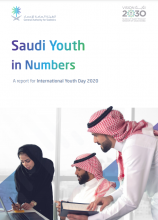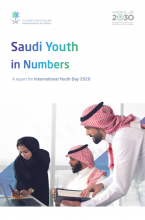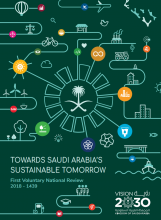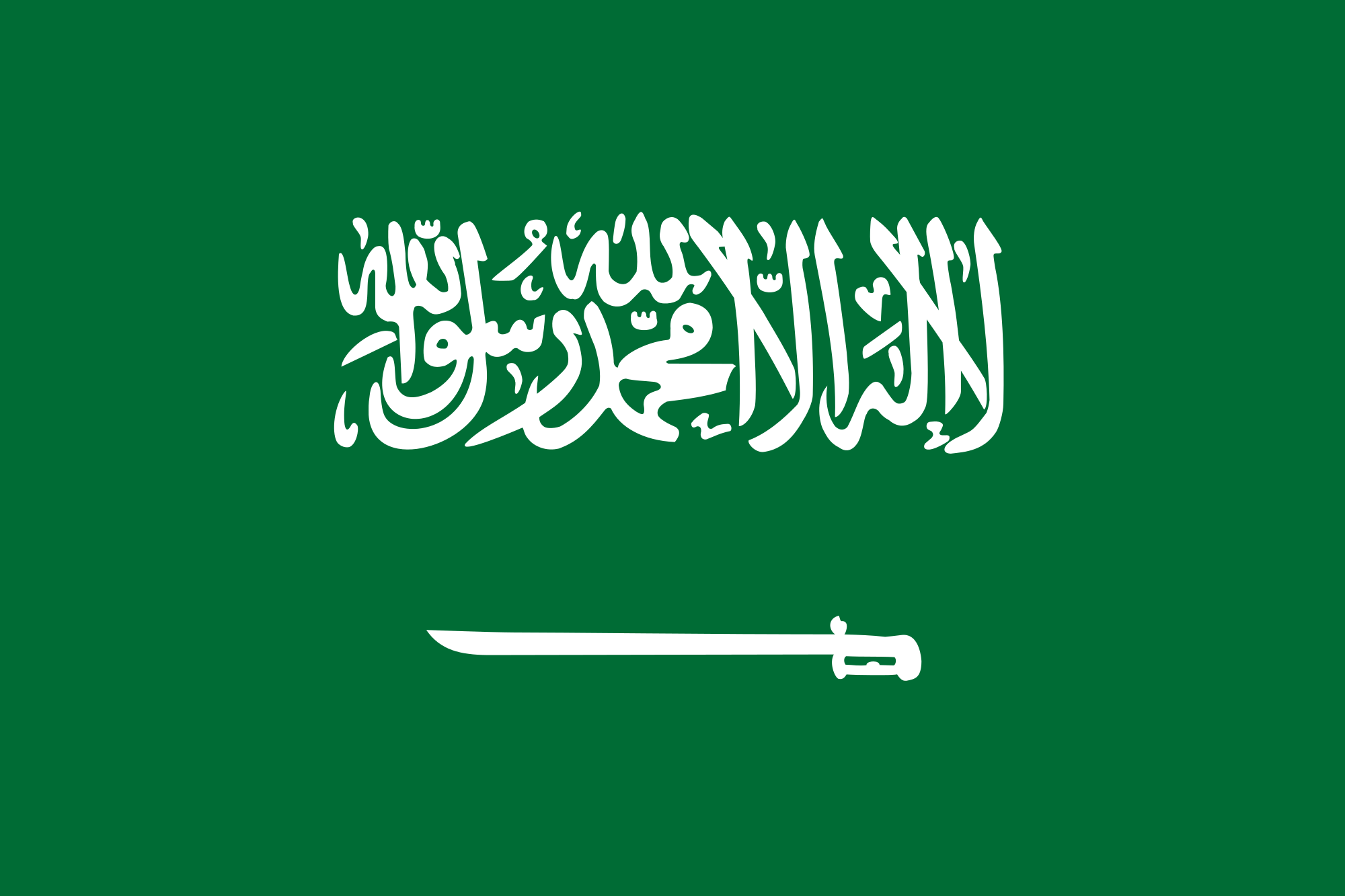 Saudi Arabia
Saudi Arabia
Saudi Arabia’s population is estimated at 36.4 million in 2022,[15] with 84.9 percent of the total living in urban areas.[2] The population below 30 years old accounts for 47.96 percent of the total population.[15] The total fertility rate is 2.39 children per woman.[15] Life expectancy is around 77.9 years, and levels of maternal mortality in 2020 and infant mortality in 2021 are around 16 per 100,000, and 5.7 per 1,000 respectively.[3][16]
The 2021 Human Development Index (HDI) for Saudi Arabia is 0.875, positioning it at 45th out of 191 countries and territories. The country’s value is below the average of 0.896 for countries in the very high human development group and the second in the Arab region, which averages 0.708.[4]
The Saudi Vision 2030 plan, adopted in 2016, has promoted substantial structural reforms to improve the business environment, placing among the ten most improved economies in the World Bank’s Doing Business 2020 out of 190 economies, with a total of eight reforms. Saudi’s efforts focused on strengthening access to credit, protecting minority investors, enhancing electronic trade single window, and adopting measures to facilitate resolving insolvency.[5]
Saudi Arabia holds 21.5 percent of the world’s proven petroleum reserves and is ranked as the second-largest exporter of crude oil in 2021.[6] Following the steep drop in oil prices in 2014, Saudi Arabia has declared its commitment to reduce oil dependence and to diversify its economy, as laid out in Vision 2030.[7] Despite progress in expanding investment into manufacturing, tourism, technology, and mining, the economy grew at a sluggish 0.83 percent in 2019, compared to an increase of 2.76 percent in 2018, largely due to a 3.7 percent decrease in the oil sector GDP. In 2022 the GDP growth registered 8.7 percent, the highest in the last decade. [8] On the other hand, the non-oil sector registered a strong performance, according to the IMF, GDP progress has been most notably reflected in non-oil growth, which has accelerated since 2021, averaging 4.8 percent in 2022. Despite lower overall growth reflecting additional oil production cuts, non-oil growth will remain close to 5 percent in 2023, spurred by strong domestic demand.[11]
The fluctuation in oil prices continues to strongly affect public finances, making fiscal balances very volatile, and increasing pressure to accelerate fiscal reforms. At the beginning of 2018, the authorities introduced a 5 percent Value Added Tax (VAT) and imposed excise duties on some products and tariffs on foreign workers. The basic VAT rate was revised to 15 percent with effect from 1 July 2020.
Due to an increase in total oil revenues driven by higher energy prices in 2018 and an increase in non-oil revenues, the fiscal deficit contracted from 9.2 percent of GDP in 2017 to 5.9 percent of GDP in 2018. The fiscal deficit further narrowed in 2019, amounting to 4.5 percent of GDP, as total spending decreased and the decline in oil revenues was offset by an increase in non-oil revenues.[9]
The world faced exceptional circumstances in 2020 at all levels, including the economic one, as the COVID-19 pandemic cast its shadow on the global economy. As part of the global economic system, the Saudi economy contracted by 4.1 percent in 2020.[9]The strict measures adopted by governments around the world to curb the spread of the Coronavirus, including travel restrictions, have reduced demand for oil. This fall in demand resulted in a collapse in oil prices by 50 percent.[10] Decreased tourism receipts and the suspension of pilgrimages to Mecca and Medina, which receives around 7.5 million pilgrims per year and generate $12 billion in revenue, equivalent to 20 percent of the country’s non-oil GDP and seven percent of total GDP [10], have affected the current account deficit registering -3.1 percent in 2020 which increased to 5.1 and 13.7 in 2021 and 2022 respectively.[11]
The total unemployment rate climbed from an average of 5.8 percent in recent years to 7.7 percent in 2020 and then it declined to 5.6 in 2022, while that of Saudis from an average of 12 percent to 13.7 percent in 2020 which then decreased to 9.4 in 2022. However, the Saudi labor force participation rate registered an increase from 55.5 percent in 2017 to 61.47 in 2022, driven by the decrease in women's unemployment rate from 23.6 in 2016 to 15.4 in 2022 compared to only 2.6 percent for men. Despite the government's efforts to direct nationals into the private sector, they still occupy around 92.4 percent of its public sector jobs but only 21.7 percent of the jobs in the private sector.[1] On 3 April 2020, the government authorized the use of unemployment insurance (SANED) to cover 60 percent of Saudi labor's salaries for a period of three months. The aid is expected to support 1.2 million of those working in coronavirus-affected companies.[13]
Under Vision 2030, Saudi Arabia launched the National Renewable Energy Program (NREP) which aims to maximize the potential of renewable energy in the Kingdom. Most recently, the country launched round three of its NREP which is comprised of four Solar PV projects with a combined generation capacity of 1,200 MW.[14]
This overview was last updated in October 2023. Priority is given to the latest available official data published by national statistical offices and/or public institutions.
Sources:
[1] General Authority for Statistics. 2020 and 2023. [ONLINE] Available at: https://www.stats.gov.sa/en [Accessed 13 March 2023].
[2] Population Division of the Department of Economic and Social Affairs of the United Nations Secretariat. 2023. World Urbanization Prospects. [ONLINE] Available at: https://population.un.org/wpp/ [Accessed 23 October 2023].
[3] Ministry of health. 2020. [ONLINE] Available at: https://www.moh.gov.sa/en/Pages/default.aspx [Accessed 24 February 2021].
[4] United Nations Development Programme (UNDP). 2023. Human Development Index. [ONLINE] Available at: https://hdr.undp.org/data-center/documentation-and-downloads ; https://hdr.undp.org/data-center/country-insights#/ranks [Accessed 25 October 2023].
[5] The World Bank. 2019. Doing Business 2020. [ONLINE] Available at: http://documents1.worldbank.org/curated/en/688761571934946384/pdf/Doing-Business-2020-Comparing-Business-Regulation-in-190-Economies.pdf [Accessed 24 February 2021].
[6] Organization of Petroleum Exporting Countries (OPEC). 2023. Annual statistical Bulletin. [ONLINE] Available at: https://asb.opec.org/; https://www.opec.org/opec_web/en/data_graphs/330.htm [Accessed 30 October 2023].
[7] Vision 2030 (KSA). 2020. [ONLINE] Available at: https://vision2030.gov.sa/en/themes/2 [Accessed 24 February 2021].
[8] Saudi Arabian Monetary Authority (SAMA). 2023. Economic Indices. [ONLINE] Available at: http://www.sama.gov.sa/en-us/indices/pages/grossdomesticincome.aspx [Accessed 30 October 2023].
[9] Saudi Arabian Monetary Authority (SAMA). 2020 and 2023. 56th an 57th Annual Report. [ONLINE] Available at: http://www.sama.gov.sa/en-US/EconomicReports/Pages/AnnualReport.aspx [Accessed 30 October 2023].
[10] Ministry of Hajj and Umrah. 2019. Open Data Platform. [ONLINE] Available at: https://www.haj.gov.sa/en/InternalPageCategories/Details/50 [Accessed 24 February 2021].
[11] International Monetary Fund. 2023. World Economic Outlook Database [ONLINE] Available at: https://www.imf.org/en/Publications/SPROLLs/world-economic-outlook-databases#sort=%40imfdate%20descending; https://www.imf.org/en/News/Articles/2023/09/28/cf-saudi-arabias-economy-grows-as-it-diversifies [Accessed 30 October 2023].
[12] Ministry of Finance. 1 June 2020. SAMA Boosts banking sector liquidity with SAR 50 Billion. [ONLINE] Available at: https://www.sama.gov.sa/en-US/News/Pages/news-574.aspx [Accessed 24 February 2021].
[13] Ministry of Finance. 3 April 2020. By order of the Custodian of the Two Holy Mosques: The Government, through Unemployment Insurance (SANED), Bears 60% of The Salaries of Saudi Private Sector labors. [ONLINE] Available at: https://www.mof.gov.sa/en/mediacenter/news/Pages/News_03042020.aspx [Accessed 24 February 2021].
[14] Ministry of Energy, Saudi Arabia. January 2019. Saudi Arabia Launches Round Three of National Renewable Energy Program. [ONLINE] Available at: https://www.powersaudiarabia.com.sa/web/attach/news/PRESS_RELEASE_Round3_RFQ.pdf [Accessed 24 February 2021].
[15] Population Division of the Department of Economic and Social Affairs of the United Nations Secretariat. 2023. World Population Prospects. [ONLINE] Available at: https://population.un.org/wpp/ [Accessed 23 October 2023].
[16] The World Bank. 2023. World Development Indicators. [ONLINE] Available at: https://databank.worldbank.org/data/source/world-development-indicators [Accessed 23 August 2023].
Data Highlights
-
The country is the largest exporter of total petroleum liquids in the world and one of the World’s largest producers of crude oil
